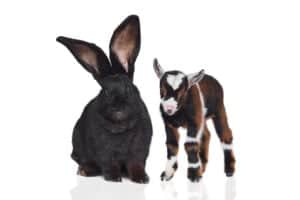Rabbit meat was commonly eaten in the United States up until around 100 years ago. It was a vital source of protein during the Great Depression when it saved many families from severe malnutrition. These days, however, rabbits are viewed more as pets than as a source of meat. This is not true for many other parts of the world, including many European countries where US visitors are sometimes shocked to find rabbit meat on the menu. Let’s take a closer look at what rabbit meat has to offer us in terms of nutrition and flavor.
Is Rabbit Meat Safe and Tasty to Eat?
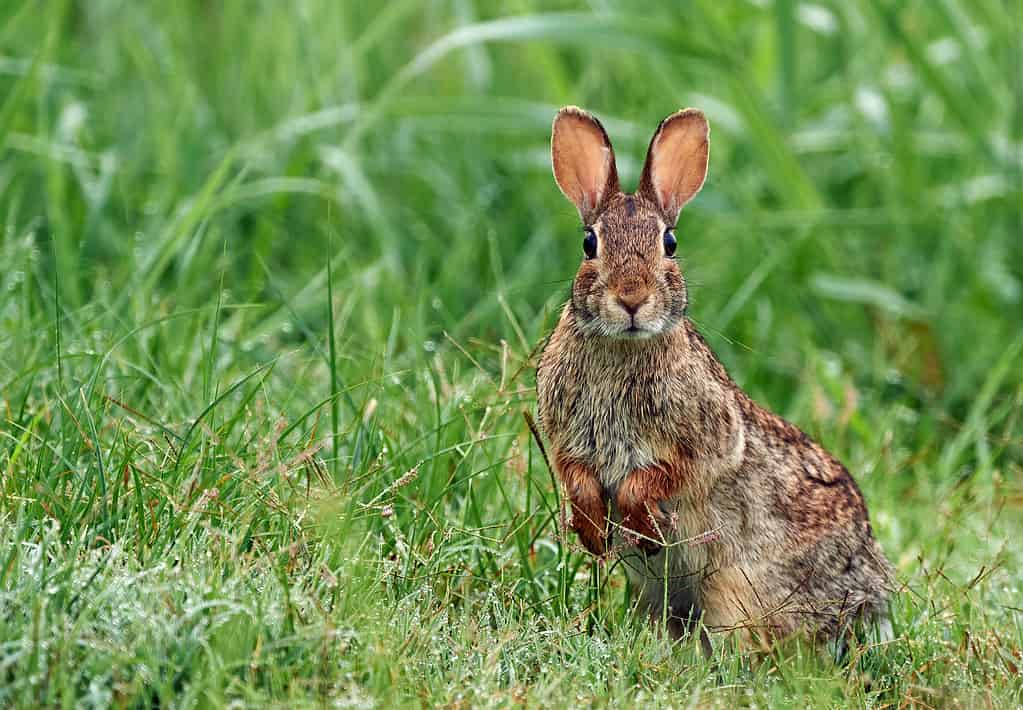
An eastern cottontail rabbit in the grass.
©ArCaLu/Shutterstock.com
Yes, rabbit meat is just as safe to eat as other game animals and domestic-farmed animals. They can carry harmful pathogens, but as long as the meat is handled and cooked correctly, the risks are limited. Some people have been concerned about tularemia which is also known as rabbit fever. This is caused by a bacterium called Francisella tularensis that can be carried by rabbits. Humans can be infected by handling rabbits or eating contaminated food. However, it is a rare and predominantly rural disease that can be treated with antibiotics.
When it comes to taste, the consensus is that rabbit meat tastes similar to chicken but with a stronger and earthier flavor that makes it more similar to game meat.
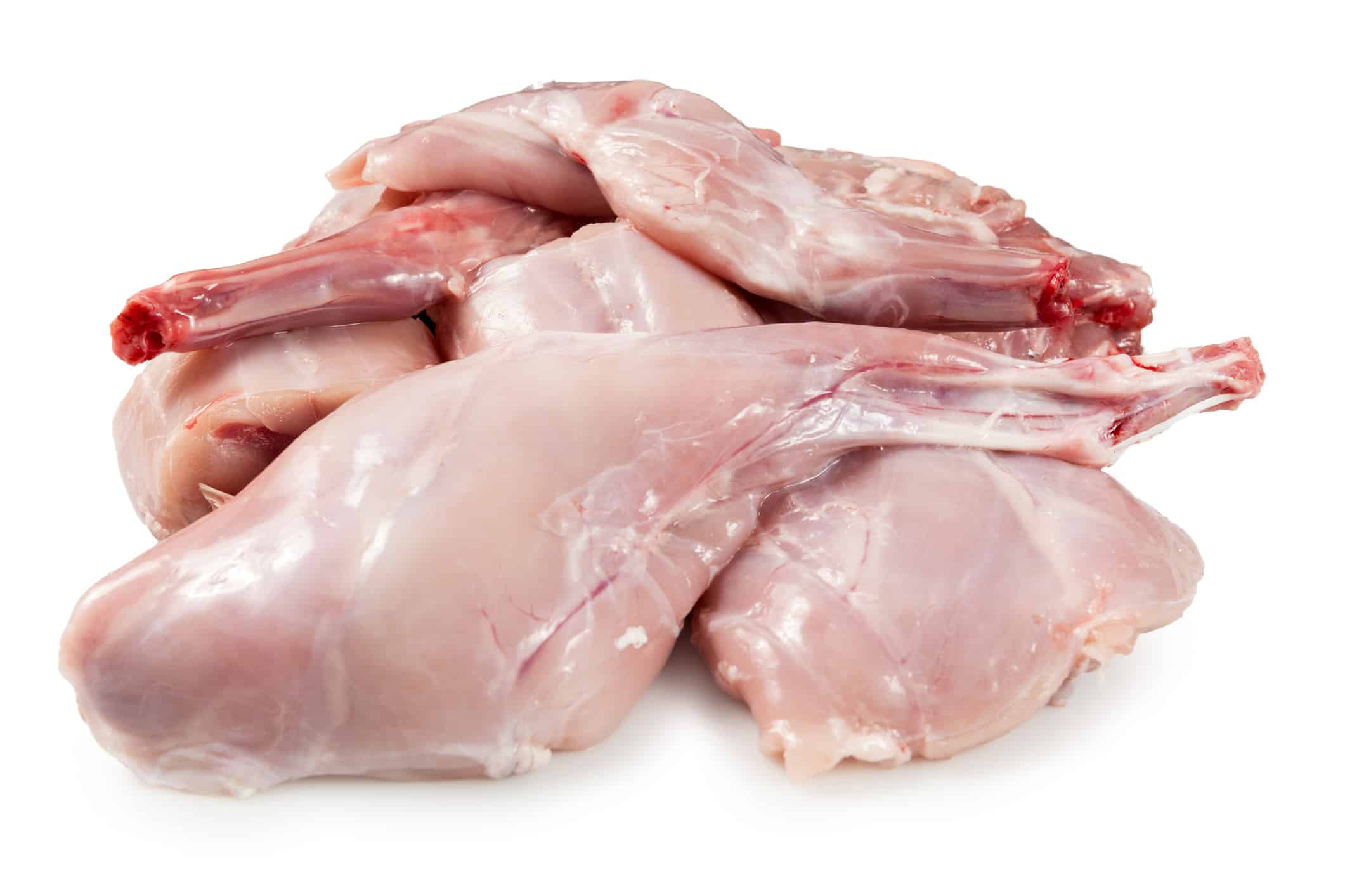
Rabbit meat is high in protein.
©Studioimagen73/iStock via Getty Images
Rabbit Meat Is an Excellent Source of Protein
The human body needs protein for building and repairing body cells, including muscles and skin. A 100g portion of rabbit meat can provide you with up to a third of your protein requirement for the day. Meanwhile, the same portion provides you with a similar number of calories (around 180) as sirloin steak. This compares favorably to fattier cuts of beef, such as rib-eye steak, which has 291 calories per 100g serving.
Fat content comparisons are also impressive, with rabbit meat containing just 8.34g per 100g compared to 19.4g per 100g of ground beef.
It Is Packed With Vitamin B12
Vitamin B12 is found in both meat and dairy products. Without it, we cannot make red blood cells. Some so-called ‘heart healthy’ diets that cut down on meat and dairy products can also reduce your B12 intake. According to the USDA Food Database, rabbit contains 6.46 micrograms of vitamin B12 per 100g serving which is higher than the 1.88 micrograms provided by a similar serving of T-bone steak.
It is also an excellent source of selenium – a mineral required for immunity and thyroid function. Rabbit meat contains 38.5 micrograms per 100g serving. Considering we only need 55 micrograms a day, this is pretty impressive!
Best Ways to Cook Rabbit
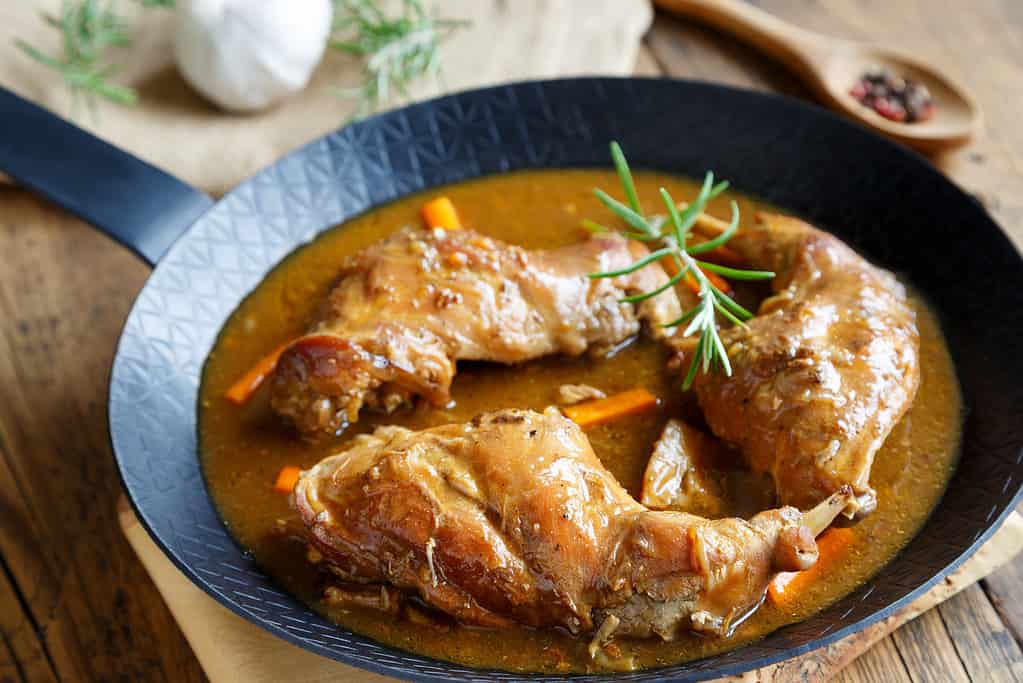
When cooking rabbit meat, use plenty of liquids.
©juefraphoto/iStock via Getty Images
Whilst the lean nature of rabbit makes it a very healthy meat, it also makes it challenging to cook. It can dry out very easily and become tough and unpalatable because there is so much connective tissue in the muscle.
Slow cooking is a great way of overcoming this – you cook the rabbit for long periods, so the connective tissue is broken down. It’s also covered in liquid which brings out the best flavor of the delicate meat and retains moisture. For this reason, rabbit stews and casseroles are very popular, especially in continental Europe. In Italy, coniglio alla cacciatora is a popular dish as is lapin a la cocotte in France. Rabbit pie also retains moisture and is full of flavor.
There are quicker methods for cooking rabbits, but it’s best to joint them first. You can fry saddle or loin cuts at moderate heat for 20 minutes. If you are roasting a rabbit, leave it on the bone to enhance the flavor and keep it moist.
Top Tips for Cooking Rabbit
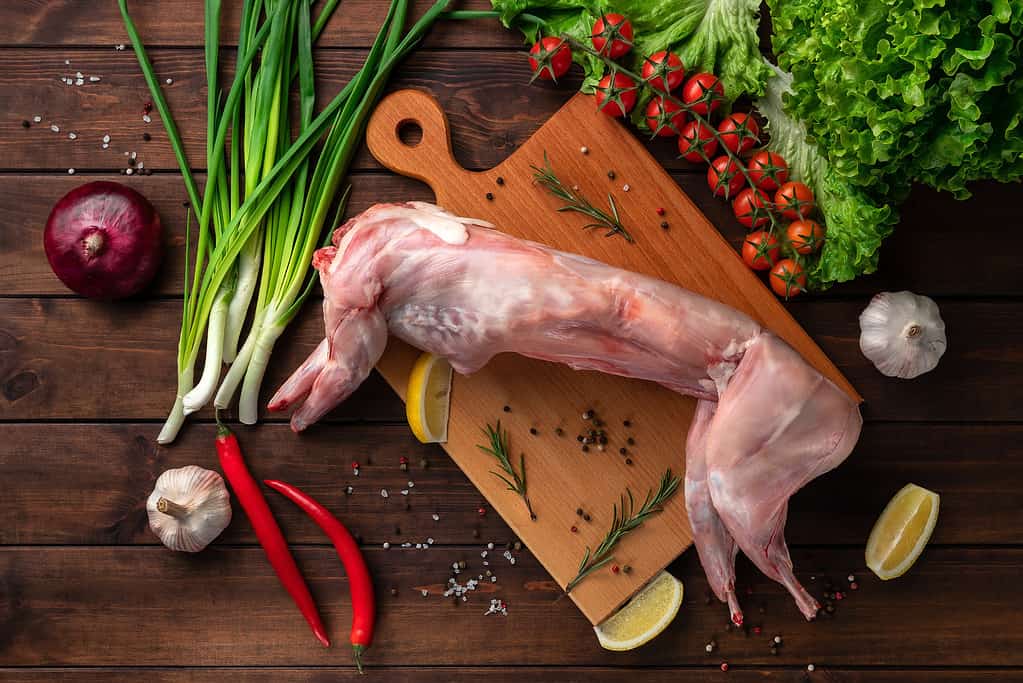
Garlic, sage, and rosemary go well with rabbit meat.
©Alexander Labut/iStock via Getty Images
Rabbit meat pairs beautifully with garlic, sage, and rosemary. You can liven it up with some tangy mustard dressing or cider and cream-based sauces. Our top tips for cooking rabbit meat are:
- Take the chilled rabbit out of the refrigerator for an hour or so before you cook it – this will allow the juices to interact with the meat when cooking and retain moisture.
- Use young rabbits for roasting and older ones for slow cooking, as they need to retain more moisture.
- If using a field-caught rabbit, double-check for any lead shot before serving.
- Retain the liver, heart, and kidneys for making delicious terrines.
- Always rest the cooked rabbit before serving.
Summary of 5 Things You Should Know About Rabbit Meat
Here’s a handy recap of facts about rabbit meat:
| Number | Rabbit Meat Fact |
| 1 | Rabbit meat is perfectly safe to eat and tastes a little like chicken but with an earthy, gamey flavor. |
| 2 | A typical serving can provide up to a third of your protein requirement for the day. |
| 3 | Rabbit meat is an excellent source of vitamin B12 and selenium. |
| 4 | The meat is best when slow-cooked with plenty of liquids in casseroles and pies. |
| 5 | Top tips for cooking rabbit include resting the meat before serving. |
The photo featured at the top of this post is © ArCaLu/Shutterstock.com
Thank you for reading! Have some feedback for us? Contact the AZ Animals editorial team.





